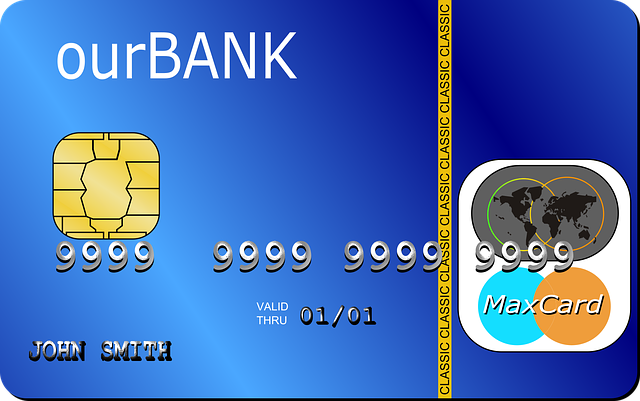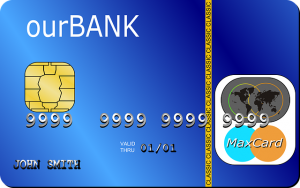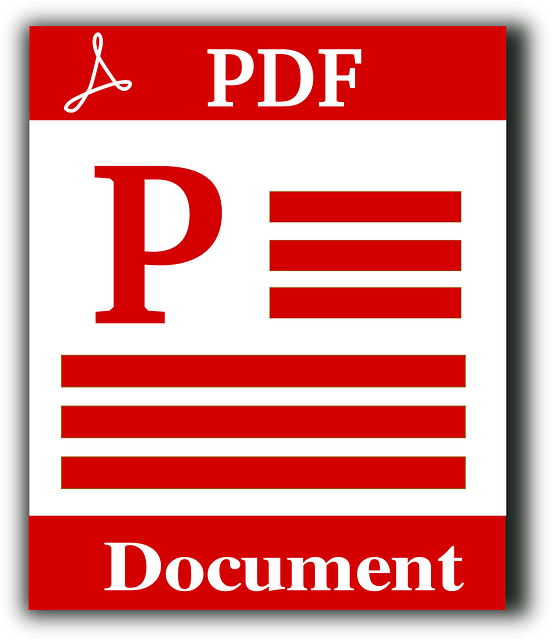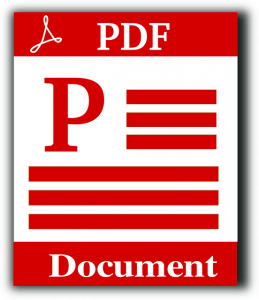
How to Adjust Inventory Quantity in Quickbooks
 Do you need to adjust the quantity of your business’s inventory? QuickBooks Desktop will automatically track inventory quantities. When your business sells a product, the popular accounting software will lower the quantity for it. There are instances, though, in which you may need to manually inventory quantities. If a product is damaged, for instance, you’ll have to manually adjust the quantity. While QuickBooks Desktop tracks inventory quantities automatically, it supports manual adjustments as well.
Do you need to adjust the quantity of your business’s inventory? QuickBooks Desktop will automatically track inventory quantities. When your business sells a product, the popular accounting software will lower the quantity for it. There are instances, though, in which you may need to manually inventory quantities. If a product is damaged, for instance, you’ll have to manually adjust the quantity. While QuickBooks Desktop tracks inventory quantities automatically, it supports manual adjustments as well.
Create an Adjustment Account
Start by creating an inventory adjustment account. You can use this account to track all of your inventory adjustments.
To create an inventory adjustment account, click “Company” and select “Chart of Accounts.” You can then create a new account by clicking the “Account” menu and choosing “New.” Under “Other Account Types,” choose “Cost of Goods Sold. You can then create a name for the account, such as “manual inventory adjustments.” Just remember to choose a descriptive name so that you can recognize it as the inventory adjustment account.
Make the Adjustment
Now it’s time to make the adjustment. With an inventory adjustment account set up, you can manually adjust inventory quantities. This is done by clicking “Vendors” and choosing “Inventory Activities.” You should see an option to adjust inventory quantity, which you’ll need to select to begin the process.
After selecting the option to adjust inventory quantity, QuickBooks will require you to enter some information about the adjustment. You’ll have to enter a date, for instance. In the “Adjustment Date” field, enter the date on which you want to record the inventory adjustment.
You’ll also have to select an account. Assuming you followed the steps listed above, you should have an inventory adjustment account. Click the “Adjust Account” menu and choose this account from the available list.
Inventory adjustments require an item. You’ll have to select the inventory item that you want to adjust. To select the inventory item, click “Find & Select Items.” After choosing it, click “Add Selected Item.”
In Conclusion
Inventory adjustments are an essential part of accounting. If your business sells products, you’ll have to track how many product units it has. QuickBooks Desktop can track inventory quantities automatically. Nonetheless, you may need to make manual adjustments. Fortunately, QuickBooks Desktop supports manual adjustments as well. Refer to the steps outlined here to manually adjust inventory quantities in QuickBooks Desktop.
Did this tutorial work for you? Let us know in the comments section below!

How to Delete a Payment From a Bank Deposit in QuickBooks
 Accidents are bound to happen when entering payments for bank deposits in QuickBooks. When you deposit money into one of your business’s bank accounts, you’ll need to record it in QuickBooks. This is done by entering a payment. You can enter a payment for each bank deposit. While simple and easy to do, though, there’s an inherent risk of error. You may accidentally enter the wrong payment. Rather than allowing it to throw off your business’s financial records, you should delete it. You can delete a payment from a bank deposit in QuickBooks by following these steps.
Accidents are bound to happen when entering payments for bank deposits in QuickBooks. When you deposit money into one of your business’s bank accounts, you’ll need to record it in QuickBooks. This is done by entering a payment. You can enter a payment for each bank deposit. While simple and easy to do, though, there’s an inherent risk of error. You may accidentally enter the wrong payment. Rather than allowing it to throw off your business’s financial records, you should delete it. You can delete a payment from a bank deposit in QuickBooks by following these steps.
Pull Up the Payment
Start by pulling up the payment that you want to remove. You can access prior bank deposit payments by clicking “Bookkeeping,” followed by “Transactions” and then “All Sales.” Go through the list until you find the payment that you want to delete. The payment should have a “Closed” status, indicating that it’s been deposited already. Clicking the date in the payment will open up the bank deposit.
Remove the Checkmark
To delete the payment, you just need to remove the checkmark from it. Bank deposit payments have a box. If there’s a checkmark in this box, it means the payment has been recorded. If there’s not a checkmark in this box, the payment hasn’t been recorded. You can delete the payment from the bank deposit by clicking the box and, thus, removing the checkmark.
After removing the checkmark, select the “Save and close” option. QuickBooks will then move the bank deposit payment back to your Undeposited Funds account. You can either leave it in this Undeposited Funds account, or you can add it to a separate bank deposit.
What About Deleting an Entire Bank Deposit?
By following the steps listed above, you can delete a payment from a bank deposit. But what if you want to delete an entire bank deposit? You can delete both payments and entire bank deposits.
To delete an entire bank deposit, go back to the “Bookkeeping” section and choose “Chart of Accounts.” The Chart of Accounts will reveal all of your accounts, including your bank accounts. Find the bank account with which you made the deposit. After locating it, click the “View register” option. Once you’ve found the deposit, click “Delete.” The bank deposit will then be removed from the bank account.
Did this tutorial work for you? Let us know in the comments section below!

Average Cost vs FIFO: What’s the Difference?
 How do you track the value of your business’s inventory? In QuickBooks, you can choose from either average cost of First In, First Out (FIFO). The former is the default value-tracking solution for inventory. FIFO, on the other hand, is an alternative value-tracking solution for inventory. While they will both assign a value to your business’s inventory, they aren’t the same.
How do you track the value of your business’s inventory? In QuickBooks, you can choose from either average cost of First In, First Out (FIFO). The former is the default value-tracking solution for inventory. FIFO, on the other hand, is an alternative value-tracking solution for inventory. While they will both assign a value to your business’s inventory, they aren’t the same.
What Is Average Cost?
Average cost is a method for tracking the value of inventory. It involves adding up the total cost of all inventory items and dividing that number by the number of inventory items. If you paid $50,000 total for 1,000 inventory items, the average cost of those inventory items would be $50. Average cost is simply the average cost that your business incurred per inventory item. QuickBooks uses average cost to track the value of inventory.
What Is FIFO?
While average cost is the default value-tracking solution for inventory in QuickBooks, you may want to switch to FIFO. FIFO is a method for tracking the value of inventory as well. It assumes that the first inventory items purchased by your business are the first ones sold by your business. If you use FIFO, QuickBooks will assume that first inventory items purchased by your business are the first ones sold by your business.
Differences Between Average Cost and FIFO
There are two methods that you can use to track the value of your business’s inventory in QuickBooks. The popular accounting software supports average cost and FIFO. Average cost is the default method, whereas FIFO is an optional and alternative value-tracking method.
The main difference between average cost and FIFO is that the latter assumes the first inventory items purchased by your business are the first ones sold by your business. Average cost doesn’t take this into account. Instead, it only looks at the total cost of the inventory items and the number of inventory items.
You can switch to FIFO by navigating to the “Advanced Inventory Settings” section in QuickBooks. Next, click “Items & Inventory” and select “Company Preferences.” Under the “Advanced Inventory Settings” menu, you should see an option for “FIFO.” Selecting the “FIFO” option will switch your account from average cost to FIFO. If you decide that you no longer want to use FIFO, you can switch back to average cost by returning to this section in QuickBooks.
Did this tutorial work for you? Let us know in the comments section below!

How to Run Reports for Tagged Transactions in QuickBooks
 Do you use tags to categorize and track your business’s transactions? Tagging transactions is a breeze in QuickBooks. While optional, QuickBooks allows you to create custom tags for transactions. Maybe you want to track all of the transactions from a particular store, or perhaps you want to track vendor-specific expenses. Regardless, you can use tags to categorize and track your business’s transactions.
Do you use tags to categorize and track your business’s transactions? Tagging transactions is a breeze in QuickBooks. While optional, QuickBooks allows you to create custom tags for transactions. Maybe you want to track all of the transactions from a particular store, or perhaps you want to track vendor-specific expenses. Regardless, you can use tags to categorize and track your business’s transactions.
Create Tag Groups
To use tags, you’ll need to create tag groups. A tag group is exactly what it sounds like: a group of tags. All tags are used to categorize and track transactions. Therefore, you’ll need to create tag groups so that you can apply them to the appropriate transactions.
The option to create tag groups is available in the “Settings” menu. After clicking “Settings,” choose “Tags.” Next, click the “New” drop-down menu and select “Tag group.” You’ll have to enter a name for the new tag group. You’ll also have to choose a color for it. When you are finished setting up the tag group, click “Save” to complete the process.
Run a Tag Report
You can run a tag report by accessing the “Bookkeeping” or “Banking” menu and choosing “Tags.” QuickBooks will then reveal a list of all your tag groups. Go through this list until you find the tag group for which you want to run a report. Click the “Run report” option under the “Action” column for the respective tag group.
QuickBooks will then generate a report for the selected tag group. You’ll be able to see all of the transactions associated with the tag group. If you want to run a report for a different tag group, simply repeat the aforementioned steps while choosing the appropriate tag group. QuickBooks will generate a report for the selected tag group You can generate reports for some or all of your tag groups by following these steps.
Edit Tag Groups
Of course, you can edit tag groups as well. To edit a tag group in QuickBooks, click the “Settings” menu and choose “Tags.” Find the tag group that you want to edit and select the “Run report” option. You should also see an option to “Edit tag” or “Edit group.” If you only want to edit the tag, you can choose the former option. To edit the tag group, choose the latter option.
Did this tutorial work for you? Let us know in the comments section below!

How to Void a Check From a Closed Period in QuickBooks
 Do you have a check from a closed period that you need to void? QuickBooks makes it easy to void checks from a closed period. Assuming you recorded the check in QuickBooks, you can void it in just a few simple steps.
Do you have a check from a closed period that you need to void? QuickBooks makes it easy to void checks from a closed period. Assuming you recorded the check in QuickBooks, you can void it in just a few simple steps.
Step #1 Create a Deposit
Start by creating a deposit for the amount of the check. Why is this necessary? If you received a check during a closed period but didn’t deposit it, you’ll incur a liability. Therefore, you should create a deposit to record this liability. In QuickBooks, you can create a deposit with the amount of the check and record it to your “Other Current Liability” account.
Step #2) Create a Replacement Check
The next step to voiding a check from a closed period is to create a replacement check. The purpose of a replacement check is to pay the liability. You can do this by accessing the “Banking” menu and selecting “Make Deposits.” In the “Payments to Deposit” window, select the account to which you want to make the deposit. You can then enter the date and other information. Make sure you select “Other Current Liability” so that it pays the liability created by the original check.
Step #3) Reissue the Check
The final step is to reissue the check. Go back to the “Banking” menu and choose “Write Checks.” QuickBooks will prompt you to enter some information about the new check. After entering the necessary information, look under the “Expenses” tab. You should see the “Other Current Liability” option, which you’ll need to select. Selecting “Save” and then “Print” will complete the process.
Keep in mind that you can also create a journal entry to void checks from a closed period. In QuickBooks, journal entries are records that allow you to correct bad data. If you need to move money between two or more accounts — or if you need to fix an error — you can use journal entries. Journal entries even work for voiding checks from a closed period.
You can create journal entries in QuickBooks Online by clicking “+ New” and choosing “Journal entry.” You’ll have to select an account on the first field, and you’ll have to select a separate account on the second field. The second account should be the one that you are sending money to or receiving money from. Journal entries may sound confusing, but they are easy to use.
Did this tutorial work for you? Let us know in the comments section below!

Help! I Accidentally Added the Same Customer Twice in QuickBooks
 If you accidentally added to the same customer twice in QuickBooks, don’t panic. You can always delete one of the customer profiles, or you can merge both of them together. QuickBooks makes it easy to deal with duplicate customer profiles. Rather than allowing duplicate customer profiles to throw off your business’s financial records, you can use one of these solutions.
If you accidentally added to the same customer twice in QuickBooks, don’t panic. You can always delete one of the customer profiles, or you can merge both of them together. QuickBooks makes it easy to deal with duplicate customer profiles. Rather than allowing duplicate customer profiles to throw off your business’s financial records, you can use one of these solutions.
How to Delete a Duplicate Customer Profile
Deleting a duplicate customer profile will prevent it from appearing on lists and menus. If you have two profiles for the same customer, you can delete one of them.
You can delete a duplicate customer profile in QuickBooks Online by accessing “Sales,” followed by “Customers.” Select the name of the customer whom you wish to delete. Clicking “Edit” will then bring up several new options, including the “Make inactive” option. Choosing the “Make inactive” option will essentially delete the customer profile. The customer’s transactions will remain on all associated reports, but you won’t find the customer on lists and menus.
How to Merge Two Customer Profiles
You can also merge two customer profiles together. Merging, of course, combines the data of the respective customer profiles. All of the customers’ transactions — as well as their other data — will be combined into a single customer profile.
To merge two customer profiles together, access “Sales” and choose “Customers.” Next, find and select the customer profile that you want to delete. When merging two customer profiles together, you’ll delete one of the customer profiles and keep the other. You should choose the customer profile that you want to delete during this step.
Clicking the “Edit” link will bring up new options. You should see a “Display name as” field. In this field, enter the customer profile that you want to keep. Clicking the “Save” link will then initialize the merging process. The two customer profiles will be merged together. Instead of having two customer profiles for the same customer, you’ll have a single customer profile. This merged profile will contain the data of both customers.
Keep in mind that you can’t merge customer profiles if either of them has any sub-customers. If you discover sub-customers on one of the customer profiles, you’ll need to convert the sub-customers into regular customers. After converting them into regular customers, you can then go back and merge the two customer profiles together.
Did this tutorial work for you? Let us know in the comments section below!

How to Invite Your Accountant in QuickBooks
 Do you have an accountant who’s responsible for managing your business’s books? You aren’t alone. Research shows that over half of all business owners have an accountant. Assuming you use QuickBooks to track your business’s finances, you’ll probably want to invite your accountant to your QuickBooks account. By inviting your accountant, he or she will have access to all of your QuickBooks-stored accounting data.
Do you have an accountant who’s responsible for managing your business’s books? You aren’t alone. Research shows that over half of all business owners have an accountant. Assuming you use QuickBooks to track your business’s finances, you’ll probably want to invite your accountant to your QuickBooks account. By inviting your accountant, he or she will have access to all of your QuickBooks-stored accounting data.
Step #1) Sign In to QuickBooks Online
To begin, you’ll need to sign in to your QuickBooks Online account. QuickBooks Online is the cloud version of Intuit’s popular accounting software. You can use it with any major web browser. You’ll need to sign in to your QuickBooks Online account so that you can send an invite to your accountant.
Step #2) Add Your Accountant
After signing in to your QuickBooks account, you’ll need to add your accountant. Click the gear-shaped icon at the top of the home screen and choose “Manage Users.” You should see an “Accounting Firms” section. Enter the name of your accountant and his or her email address in this section.
Step #3) Send the Invite
Now it’s time to send the invite. In the “Accounting Firms” section is an “Invite” link. Clicking the “Invite” link will send an invite to your accountant. QuickBooks Online will send the invite to the email address that you specified in the previous step. Assuming you entered the right email address, your accountant should receive your invite.
Your accountant will have to create a user ID when signing in to your QuickBooks Online for the first time. The email invite will contain a link, which your accountant can use to sign in to your QuickBooks Online account. Assuming your accountant doesn’t already have a user ID, he or she will have to create one.
Step #4) Check the Status
You can check the status of the invite to see whether your accountant has accepted it yet. The status is available on the “Manage Users” page of QuickBooks Online. After sending your accountant an invite, you should see an “Invited” status on this page until he or she accepts the invite. Once your accountant has accepted the invite, the status on this page will change to “Active.” The “Active” status indicates that your accountant is now a registered user of your QuickBooks Online account.
Did this tutorial work for you? Let us know in the comments section below!

Flat View vs Hierarchical View in QuickBooks: What’s the Difference?
 When using QuickBooks Desktop, you may notice an option to switch from flat view to hierarchical view and vice versa. QuickBooks Desktop supports two different view types: flat and hierarchical. You can access them in the Customer Center. Regardless of the view type, your data will remain the same. The view type simply changes the presentation of the data. What’s the difference between the flat and hierarchical view exactly?
When using QuickBooks Desktop, you may notice an option to switch from flat view to hierarchical view and vice versa. QuickBooks Desktop supports two different view types: flat and hierarchical. You can access them in the Customer Center. Regardless of the view type, your data will remain the same. The view type simply changes the presentation of the data. What’s the difference between the flat and hierarchical view exactly?
What Is Flat View?
Flat view means that all items will be displayed on the same level. In QuickBooks Desktop, they’ll be aligned to the left. None of the items will be higher or lower than other items. Rather, flat view lives up to its namesake by using a flat, same-level display orientation for all items.
What Is Hierarchical View?
Hierarchical view is an alternative display option for items. It’s characterized by hierarchy. Hierarchy, of course, means that some items are higher or lower than other items. They aren’t on the same level. When given hierarchy, items have a parent. A parent is a higher-level item.
It’s important to note that items can have multiple levels of parent. An item placed directly under another item has a single parent. But parents can have their own parents, resulting in multiple levels. The bottom line is that flat view uses a same-level display orientation, whereas hierarchical view uses a hierarchical display orientation in which items have parents.
Choosing Between Flat View and Hierarchical View
You can choose your preferred view type in the Customer Center. Assuming you’re using a version of QuickBooks that supports this feature, click the “Customers” link at the top of the main menu and select “Customer Center.” Next, right-click anywhere on your customer list.
After right-clicking your customer list, you should see a list of new options. There’s a “Hierarchical View” option and a “Flat View option. Clicking these options will enable hierarchical view or flat view, respectively.
The view type is ultimately a matter of personal preference. Some business owners and accountants prefer to use flat view, whereas others prefer to use hierarchal view. As previously mentioned, the view type won’t affect your data. Whether you choose flat view or hierarchical view, it will only change the presentation of your data. Feel free to experiment with both view types to determine which one works best for your accounting needs.
Have anything else that you’d like to add? Let us know in the comments section below!

How to Troubleshoot an Overflow Error in QuickBooks
 If you’ve encountered an overflow error when using QuickBooks, you’ll need to fix it. QuickBooks is a popular accounting solution. It’s beginner-friendly, loaded with features and integrates with other common types of software. When using it, though, you may encounter an overflow error. What causes overflow errors in Quickbooks, and how do you fix them?
If you’ve encountered an overflow error when using QuickBooks, you’ll need to fix it. QuickBooks is a popular accounting solution. It’s beginner-friendly, loaded with features and integrates with other common types of software. When using it, though, you may encounter an overflow error. What causes overflow errors in Quickbooks, and how do you fix them?
Common Causes of Overflow Errors
Overflow errors can have different causes. If your company file has a field with a value greater than $9,999,999,999,999.99, for instance, you may notice an overflow error. All fields must be lower than this amount. It only takes a single field with an excess value to trigger an overflow error.
Discrepancies between the quantity of an inventory item and the value of the same inventory item can cause overflow errors. On its website, Intuit explains that inventory items with a quantity of 1 and a value of $18,000 may result in an overflow error
Something as simple as a corrupt company file can cause overflow errors. Your company file contains all of your accounting data. If it becomes corrupted, you may discover an overflow error when you attempt to open it.
Tips on Fixing Overflow Errors
One of the first things you should do after encountering an overflow error is to rebuild your data. In QuickBooks Desktop, the option to rebuild data is available by clicking the “File” menu and choosing “Utilities.” Rebuilding your data will recreate your company file. QuickBooks will prompt you to back up your company file first. Assuming you’ve already backed up your company file, you can proceed to rebuild your data. Rebuilding will often fix overflow errors, especially if they involve a corrupted company file.
If the overflow error was caused by a field with a value greater than $9,999,999,999,999.99, you can fix it by editing the problematic field. Find the field with excess value and change it to a lower value. QuickBooks can’t handle values larger than $9,999,999,999,999.99. In cases such as this, you may discover an overflow error. Fortunately, you can fix these overflow errors by editing the problematic field or fields.
Some overflow errors are the result of damaged transactions. To fix them, run a report to show the overflow error. You can then fix the damaged transaction by following the steps outlined here. Repairing the damaged transaction should resolve the overflow error.
Did this tutorial work for you? Let us know in the comments section below!

How to View PDF Files in QuickBooks
 QuickBooks uses the Personal Document Format (PDF) for many of its files. Forms, for instance, are saved as PDF files. If you want to preview a form before printing it, you’ll have to open it as a PDF file. If your computer doesn’t have a PDF reader — or if your computer isn’t configured to use the PDF reader — you won’t be able to preview the form. How do you view forms and other PDF files in QuickBooks exactly?
QuickBooks uses the Personal Document Format (PDF) for many of its files. Forms, for instance, are saved as PDF files. If you want to preview a form before printing it, you’ll have to open it as a PDF file. If your computer doesn’t have a PDF reader — or if your computer isn’t configured to use the PDF reader — you won’t be able to preview the form. How do you view forms and other PDF files in QuickBooks exactly?
Download a PDF Reader
You’ll need a PDF reader to view PDF files. PDF readers are programs that, as the name suggests, are designed to read PDF files. You can’t open PDF files in Notepad or similar word processing programs. While most PDF files contain text, they support other forms of content as well, such as images. Therefore, PDF files require the use of a PDF reader.
One of the most popular PDF readers is Adobe Acrobat Reader. It’s a free PDF reader offered by Adobe. You can use it to open and view PDF files. Other PDF readers include Foxit Reader, Nitro Reader and Javelin PDF Reader. Assuming you don’t already have one, you’ll need to download a PDF reader so that you can view PDF files in QuickBooks.
Set PDF Reader to Open Automatically
After downloading a PDF reader, you should set it as the default program for PDF files. If your computer runs Windows 10, click the “Start” menu, followed by the “Settings” icon. Next, click “Apps” and choose” Default apps.” Now scroll through the list of file formats until you see PDF. Clicking PDF will then allow you to choose the PDF reader that you previously downloaded.
Setting the PDF reader to open PDF files automatically will allow you to view PDF files in QuickBooks. You shouldn’t get an error message stating that you don’t have a PDF reader. As long as you’ve downloaded a PDF reader and set it to open PDF files automatically, you’ll be able to view them in QuickBooks.
In Conclusion
You can preview forms before printing them in QuickBooks. However, you’ll need a PDF reader to do so. QuickBooks uses the PDF format for its forms. If you don’t have a PDF reader, you may encounter an error message when attempting to preview forms.
Have anything else that you’d like to add? Let us know in the comments section below!
